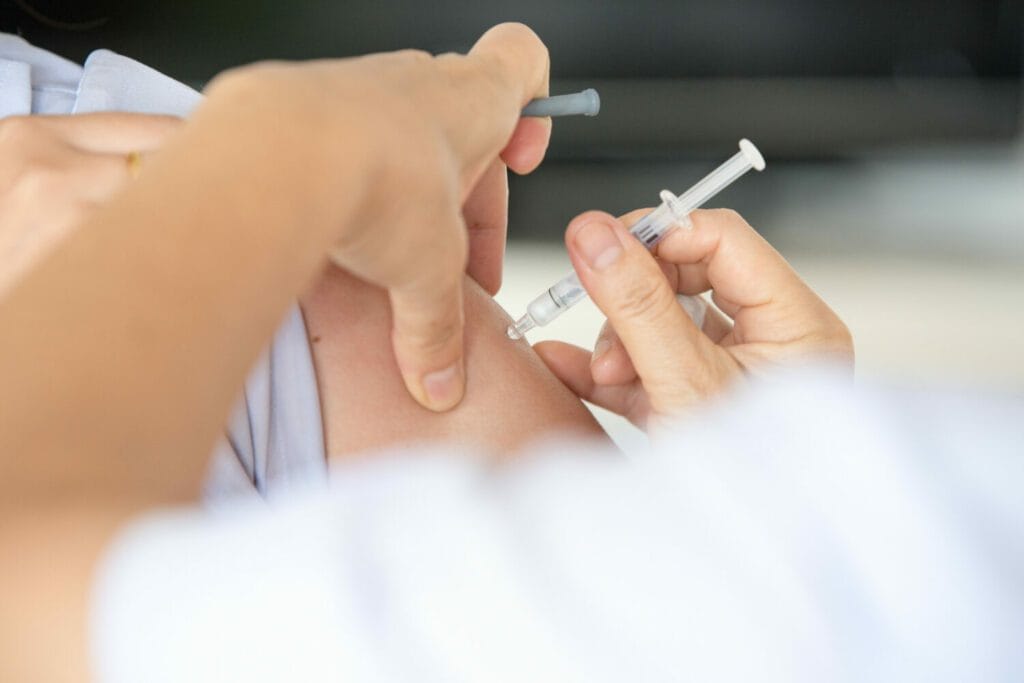Vaccines save millions of lives, but they need proper storage to stay effective. The cold chain is a system that keeps vaccines at the right temperature from manufacturing to use.
Cold chain management in Australia is crucial. It ensures vaccines are safe and work as intended. High temperatures or freezing can damage vaccines, making them useless.
Proper monitoring of storage and transport conditions is the backbone of this system. With strict guidelines and innovation, Australia maintains a strong cold chain system to protect public health and prevent disease.
What Is the Cold Chain and Why Is It Crucial?
The cold chain refers to a temperature-controlled supply chain required for the successful distribution of temperature-sensitive products, including vaccines. Vaccines must be stored and transported within a specific temperature range—typically between 2°C and 8°C—to preserve their potency and safety, and Cold Chain Vaccines are typically -80°C.
If the cold chain is broken at any point, be it during manufacturing, transit, or storage, vaccines can deteriorate. For instance, a temperature spike could render a measles vaccine ineffective, leaving patients unprotected. This life-saving supply chain ensures that vaccines reach their destination viable and ready to protect communities.
Why Is the Cold Chain Essential?
- Preserves Vaccine Potency: Temperature-sensitive vaccines can lose efficacy if improperly stored, putting patients at risk.
- Reduces Waste: A compromised cold chain can result in wasted vaccines, an issue with significant financial and public health implications.
- Supports Public Health Campaigns: Programmes like immunising children against polio rely on the consistent delivery of vaccines to even the most remote areas.
The Role of Temperature Monitoring in the Cold Chain
Temperature monitoring is at the heart of the cold chain, acting as a safeguard against disruptions. Real-time temperature tracking ensures that any deviation from the required range is identified and addressed promptly. Numerous innovative technologies and best practices support this crucial process.
Key Temperature Monitoring Technologies
- Digital Data Loggers (DDLs): DDLs are widely used to provide continuous temperature readings. These devices store data that healthcare professionals can review to ensure compliance with temperature regulations.
- Wireless Sensors and IoT Devices: Internet of Things (IoT)-enabled temperature sensors allow for real-time monitoring and alerts. These systems can notify stakeholders of temperature excursions immediately via smartphones or computers.
- Cryo Boxes with Sensors: Specialised cryo boxes come equipped with temperature-monitoring technology to ensure consistency during vaccine transit.
- Cloud-Based Systems: Cloud-connected platforms collect and analyse temperature data from multiple cold chain points, providing a full visibility dashboard for logistics teams.
Best Practices for Effective Temperature Monitoring
- Regularly calibrate monitoring equipment for accuracy.
- Provide training to personnel handling vaccines to detect and act on temperature anomalies.
- Use tamper-proof devices to ensure data integrity.
- Implement backup systems, such as auxiliary power generators, to maintain monitoring during power outages.
By leveraging these technologies and best practices, healthcare professionals can minimise risks and ensure the safe delivery of vaccines.
Challenges and Solutions in Maintaining the Cold Chain
Despite its critical importance, maintaining the cold chain is fraught with challenges.
Common Challenges
- Power Outages: Blackouts disrupt refrigeration systems, particularly in regions with unstable electricity supply.
- Remote Locations: Transporting vaccines to areas with rugged terrains and poor infrastructure can compromise temperature control.
- Human Error: Untrained personnel might mishandle storage or monitoring equipment, leading to breaches in the cold chain.
- Equipment Failures: Malfunctioning refrigerators or outdated technology may jeopardise the vaccine supply chain.
Innovative Solutions
- Cryo-Site Technology: Cryo-Site is an advanced geolocation-enabled solution that monitors temperature, location, and time, ensuring vaccines are stored and transported safely, even in challenging conditions.
- Solar-Powered Refrigeration Units: For areas with unreliable electricity, solar-powered units provide a sustainable, consistent cooling option to protect vaccines.
- Mobile Penetration in Data Collection: Collaborative systems, supported by mobile apps, enable healthcare workers to document and communicate vaccine temperatures in real time.
These solutions are vital to overcoming environmental and logistical hurdles, ensuring the cold chain remains intact where it’s needed most.
The Impact of the Cold Chain on Global Health
The cold chain plays an indispensable role in advancing global health initiatives. Over the last few decades, it has been instrumental in the eradication of deadly diseases and the reduction of mortality rates worldwide.
Achievements Through a Robust Cold Chain
- Polio Eradication: The global effort to eliminate polio relied heavily on the cold chain, enabling the safe delivery of vaccines to rural communities.
- COVID-19 Vaccination Campaigns: During the pandemic, the cold chain allowed the mass distribution of temperature-sensitive mRNA vaccines, like those from Pfizer and Moderna.
- Childhood Immunisations: The cold chain supports programmes that immunise children against life-threatening diseases like measles, tuberculosis, and diphtheria, dramatically reducing child mortality rates.
Ultimately, without the cold chain, these public health milestones wouldn’t have been possible.
Future Trends and Innovations in Cold Chain Management
Technology is revolutionising cold chain management, introducing exciting innovations that promise to improve efficiency and safety.
Cutting-Edge Innovations
- Blockchain for Data Transparency: Blockchain technology offers a secure way to record and share temperature data, improving traceability and accountability in the supply chain.
- AI and Machine Learning: Predictive AI can forecast potential temperature excursions or equipment failures, allowing proactive measures to avoid incidents.
- Drone Delivery: Drones equipped with temperature-controlled compartments are emerging as a solution to transport vaccines to hard-to-reach regions.
- Green Cold Chain Solutions: The focus on sustainability is driving the development of eco-friendly refrigerants and low-energy storage options.
These advancements demonstrate what’s possible when technology and healthcare intersect, promising greater access to vaccines on a global scale.
Protecting Global Health—One Vaccine at a Time
The cold chain isn’t merely an operational task—it’s a lifeline for public health. From enabling childhood immunisations to supporting pandemic relief efforts, its importance cannot be overstated.
However, for it to be successful, the dedication and expertise of healthcare professionals are essential.
By optimising cold chain processes and adopting innovative technologies, we can ensure vaccines reach every corner of the globe, saving lives and contributing to healthier communities.


